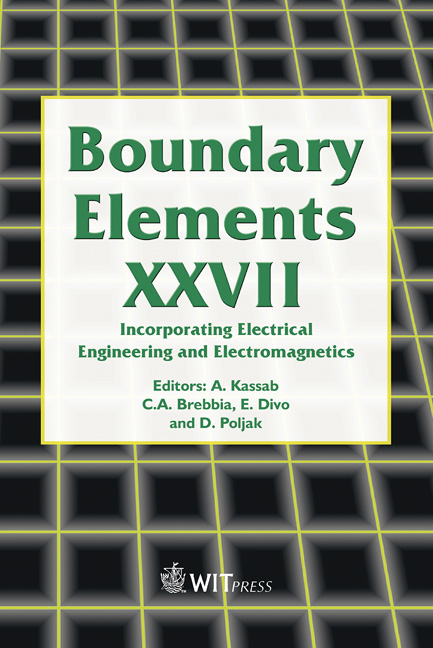Torsion Of Cracked Components Using Radial Basis Functions
Price
Free (open access)
Transaction
Volume
39
Pages
10
Published
2005
Size
326 kb
Paper DOI
10.2495/BE050111
Copyright
WIT Press
Author(s)
V. M. A. Leit˜ao
Abstract
In this work, and in the context of the collocation-based radial basis functions approach, a combination of regular and singular functions is considered for the analysis of cracked cross-sections subjected to torsional moments. 1 Introduction Radial basis functions are essential ingredients of the techniques generally known as ”""meshless methods”. In a way or another all of the meshless (or mesh reduc- tion) techniques attempt to solve boundary-value problemswithout resorting to the definition of a ”mesh” (at least not in the form meshes are usually defined in the context of finite or boundary element methods) thus requiring some sort of radial function to measure the influence of a given location on another part of the domain. Techniques based on the partition of unity and the moving least squares concepts (such as the Element Free Galerkin or the hp-clouds methods) are, undoubtedly, the most popular meshless methods. A brief review of the various proposals that have been made (since the early work of Lucy on smoothed particle hydrodynamics) may include the works of Liszka on generalized finite-differences, that of Nayroles et al. on the diffuse element method), Belytschko and co-authors on the element-free Galerkin method; Duarte and Oden on the h-p clouds method, Babuska and Melenk on the partition of unity method, Liu and co-authors on the reproducing kernel method and that of De and Bathe on the finite sphere method. Other approaches include the works of Mukherjee and Mukherjee on the boundary node method and that of Atluri and Zhu on local forms of boundary integral equations. (for the complete references the reader is referred to [1].)
Keywords





